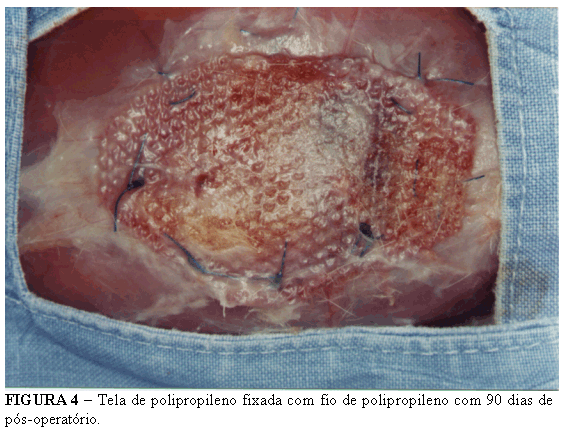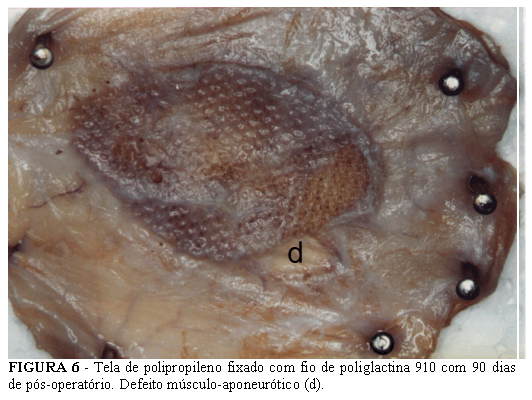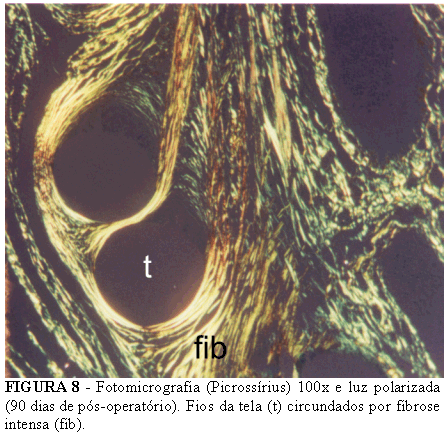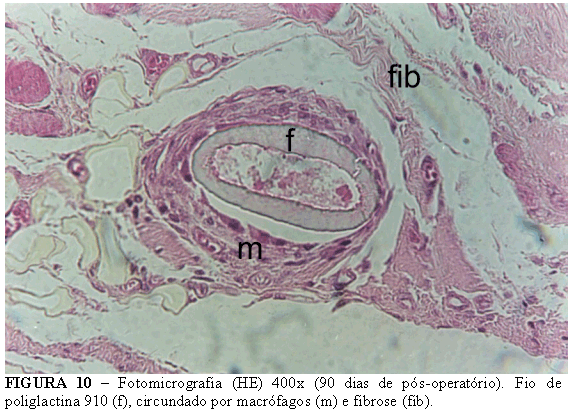PURPOSE: The aim of this study is to assess fixation of a polypropylene mesh in the repair of incisional hernias comparing an absorbable (polyglactin 910) suture and an inabsorbable (polypropylene) one. METHODS: Eighty-one male rats of the Wistar breed, weighing from 180g to 220g, were submitted to a longitudinally resection of a musculoaponeurotic and peritoneal segment (3x2 cm) of the abdominal wall. Reconstruction was performed by reinforcement with polypropylene mesh, overlaid on the aponeurosis. They were distributed in two groups according to the thread used for mesh fixation as follows: (1) polyglactin 910 group, fixed with 8 stitches 4.0 Polyglactin 910 suture; and (2) Polipropylene group, fixed with 4.0 polypropylene suture. The skin suture was performed with 4.0 nylon continuous stitches. After 90 days, animals were sacrificed and submitted to macroscopic evaluation for the presence of hernias. Histologic samples were stained for Hematoxylin-Eosine and Sirius-Red and were assessed for signs of cicatrization such as chronic inflammatory reaction, fibrosis, suture absortion and percentage of fibrosis by computer-assisted video morfometric technic. RESULTS: There was no significant difference between the groups studied in relation to hernia formation (p=0,194). The histologic study showed significant increase of fibrotic reaction in the polipropylene group (p=0,0005), but this finding was not confirmed in the video-morfometric evaluation. Considering chronic inflammatory reaction, there was no difference between groups in relation to giant cells, lymphocytes and neutrophils. However, in the polipropylene group, macrophages were significantly increased (p=0,02). Polyglactin 910 has not been absorved 90 days after the procedure. CONCLUSIONS: The results of this study suggest that the fixation of polipropilene mesh is effective using absorbable sutures in the repair of ventral (incisional) hernias.
Icisional hernia; Fixation of polypropylene mesh; Polypropilene; Polyglactin 910














